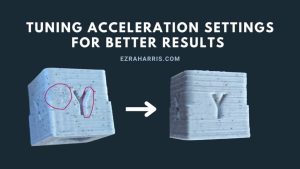Tag: Octoprint
-

Tuning Acceleration on my 3D Printer
Yesterday I got my Printrbot Simple Metal plus running, I had gotten it previously running, but it had significant build issues, mainly with no ease of access of the motherboard, when I designed the adapter for the SKR 1.4 motherboard to fit into the old Printrbot motherboard slot, I had no way of accessing the…
-
Upgrades for my Ender-3
I finally got around to fixing and upgrading my Ender-3. I’ve had my Ender3 for almost 2 years now and have occasionally been upgrading when needed. Last year I made my best upgrade to the “silent board” TMC2208 stepper drivers. Which significantly silenced the noise of the printer when printing. As well as a BL…
-
Octoprint
Over the year, I’ve used Octoprint for my 3d printers. Octoprint is a server that hosts on a Raspberry Pi (and now even an Android device), which then you connect to your printer, which you can connect using the local IP. Octoprint is mainly used for managing your prints since it’s a lot easier to…
-
Octoprint: Night Vision Raspberry Pi Camera
Recently when I set up my new Octoprint setup, I had included a raspberry pi touchscreen as well, and I had needed to 3D print a case for it to mount to the top of my Ender-3. After a little bit of searching, I found a design I liked. as I was printing it, I…